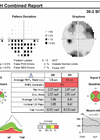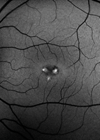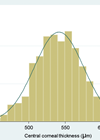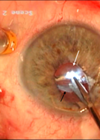Trainees
A brief history of colour vision
Andrew Want takes a look at how colour vision has evolved in humans and animals and how it differs across species. Colour vision is something that we often take for granted, but it has become so intrinsic to the way...
Useful digital resources for the modern ophthalmologist
In the age of the internet and a smartphone at everyone’s fingertips, here are some free resources I have found to be useful on the job, and hopefully will be of use to you too. Feedly (Android/iOS): Better known as...
End of an era: completing training. Tips for survival, fellowship applications and how to CCT
Tafadzwa Young-Zvandasara shares the things he wishes he had paid more attention to when approaching the end of training. It is the end of an era, you are now ready to move on. Training has been filled with a structured...
A near miss
A 55-year-old gentleman presented with a ‘blurry patch’ to his left eye which he had noticed for the past two months. The visual acuity with correction was 6/5 in the right eye and 6/6 in the left eye on the...
SOS (Simplified Ophthalmic Statistics) Part 3: Which statistical test should I use (if any)?
P<0.05 is a statement that brings joy to many researchers. Arguably this is because inclusion of such a statement may increase the chance of acceptance for publication. Whilst statisticians and non-statisticians are united in trying to change this culture, cultural...
In conversation with Salman Waqar
Hari Kaneshayogan interviews Salman Waqar, a Consultant Ophthalmologist with a keen interest in medical innovation. He is the inventor of the Waqar suture removal forceps, which combines suture cut and removal in one instrument. He has also created an injection...
Practical phacodynamics – making the most of your phacoemulsification machine
Understanding phacodynamics is appreciating the subtleties in the dynamic changes of the fluidics and the ultrasonic power delivered. Kristina Southcott explains. Increase my vacuum! Increase my bottle height! Increase my phaco power! I frequently observe the above commands being directed...
On becoming a man
It was at the height of the gender debate, with Donald Trump banning transsexuals from serving in the US army and parts of the first world indulging in controversies on whether separate transgender toilets are needed, that a 40-year-old lady,...
SOS (Simplified Ophthalmic Statistics) Part 2: How to summarise your data and why it’s a good idea to do so
Studies involve capturing data. Statistical techniques allow data to be used to answer important research questions. A case series may have data on a handful of subjects but we are now entering the Big Data arena where datasets can be...
Decontamination and sterilisation of surgical instruments and medical devices
Ann-Marie Ablett is a Theatre Nurse and Team Leader who volunteers with Orbis. This has allowed her to gain a wealth of experience on ophthalmic procedures, nursing in under-privileged parts of the world, leadership, management and use of scarce resources....
How a calcified Soemmerring ring was removed from the vitreous cavity when the cutter and forceps failed to do so
Know’st thou the land where lemon-trees do bloom,And oranges like gold in leafy gloom; A gentle wind from deep blue heaven blows, The myrtle thick, and high the laurel grows? ‘Tis there! ‘tis there, O my beloved one, I with...
Simplified Ophthalmic Statistics (SOS) Part 1: An introduction to data – how do we classify it and why does it matter?
Introductory statistics courses often start by explaining how data can be classified in different ways. What is not always clear is why you would need to know this. Catey Bunce and Tafadzwa Young-Zvandasara explain. The term data can be applied...


















